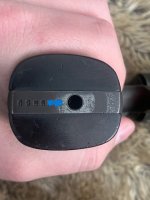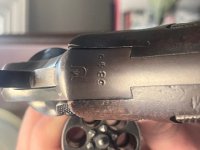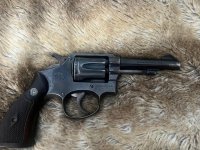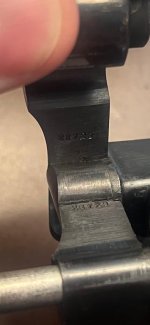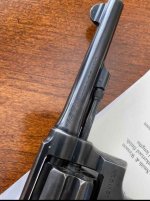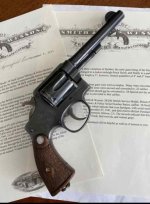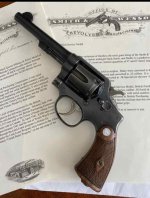Hey everyone, first time poster here, I’m new to old school revolvers and have been getting the itch. So here it goes. What the hell do I have here?
Is this a “pre model” 10 or 38 special military and police? Are they the same thing? My buddy told me this to be a “pre victory model” but I honestly don’t know.
The numbers match on the bottom of the barrel, bottom of the butt and on the cylinder. However, the numbers on the inside of the crane are different but they match each other.
Also, what is the stamp on the back of the frame with the “U and Arrow”, my buddy swears they are a British proof, but I cannot find any other British proof marks on the gun. From my limited research they are South African Proof Marks but to be honest I don’t know. I know the frame has some “love and patina” but the barrel is fantastic. I picked this up for 400 chicken legs out the door.
Does the proof mark on the back make this shall I say “uncommon” and does it add any value to it.
Thank you all so much for looking into this, looking forward to getting some answers.
It is a 6 digit SN 6958XX
Is this a “pre model” 10 or 38 special military and police? Are they the same thing? My buddy told me this to be a “pre victory model” but I honestly don’t know.
The numbers match on the bottom of the barrel, bottom of the butt and on the cylinder. However, the numbers on the inside of the crane are different but they match each other.
Also, what is the stamp on the back of the frame with the “U and Arrow”, my buddy swears they are a British proof, but I cannot find any other British proof marks on the gun. From my limited research they are South African Proof Marks but to be honest I don’t know. I know the frame has some “love and patina” but the barrel is fantastic. I picked this up for 400 chicken legs out the door.
Does the proof mark on the back make this shall I say “uncommon” and does it add any value to it.
Thank you all so much for looking into this, looking forward to getting some answers.
It is a 6 digit SN 6958XX

